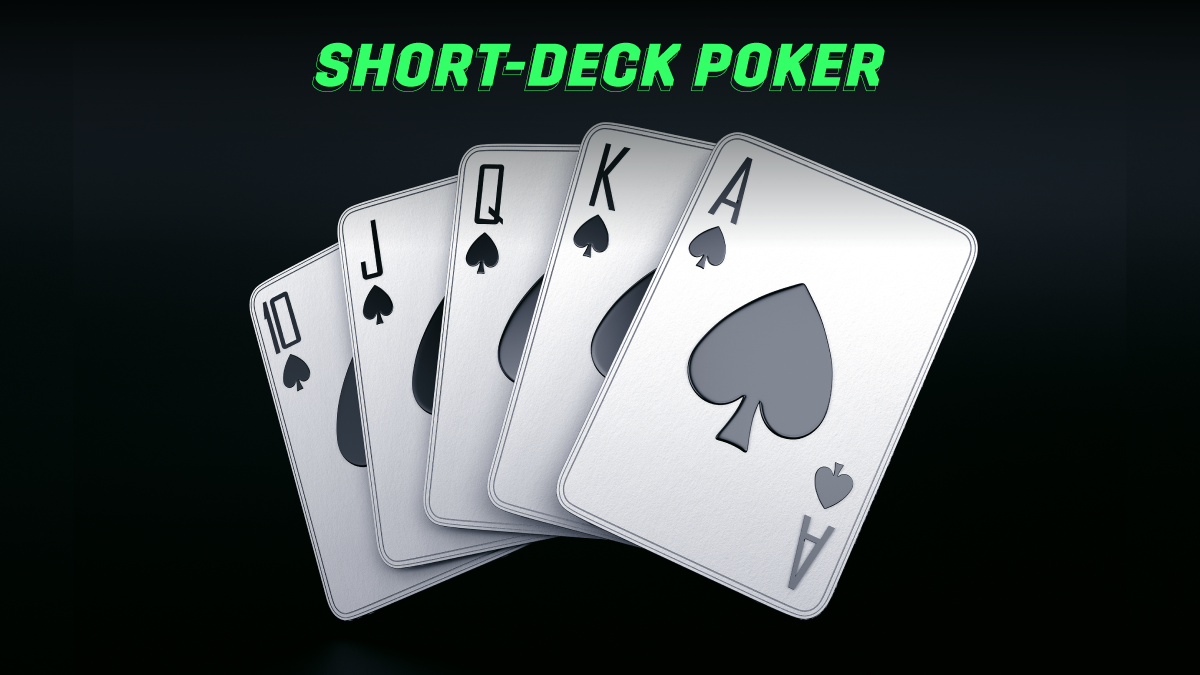
Beyond the Basics: Understanding ATAS Short Deck Poker Rules
Ever feel like Texas Hold’Em is getting a little stale? Craving a fresh challenge that keeps the adrenaline pumping? Look no further than Short Deck Poker (SDP), a captivating variant that’s taken the poker world by storm. This guide isn’t just about the rules – we’ll delve into the history, strategic nuances, and insider tips to help you master this high-octane game.
A Blast from the East Meets the West:
Short Deck Poker story starts in Asia, where it became a favorite amongst high-rollers. While the exact timeline is a bit fuzzy, its rise to prominence in the West is a recent phenomenon. Around 2018, SDP embarked on a global tour, starting in Australia and eventually captivating audiences in Europe and the United States.
So, what sparked this sudden popularity? Firstly, Short Deck Poker offers a faster pace and more action compared to Hold’Em. With a smaller deck (think removing the deuces through fives), your chances of hitting exciting hands like straights and flushes go up significantly. This keeps the game dynamic and unpredictable – perfect for those who like a little extra thrill. Additionally, SDP often involves higher stakes, catering to experienced players seeking a bigger challenge and potentially bigger wins.
While the core gameplay of SDP mirrors Hold’Em – two hole cards, community card reveals (flop, turn, river), and betting rounds – there are some key distinctions:
- Button Blind, Not Small Blind: Forget the small/big blind structure of Hold’Em. SDP uses a “button blind” format. The player on the button (the dealer last round) has to put in a mandatory bet. Everyone else throws in an ante (a smaller bet) and then decides whether to match the button’s blind pre-flop (before the flop is revealed).
- Hand Rankings with a Twist: Most hand rankings remain the same as Hold’Em. However, there’s one crucial difference: a flush outranks a full house. This seemingly minor change significantly impacts strategy because the reduced deck size makes flushes rarer and more valuable.
Think Like a Pro: Strategic Shifts for ATAS Short Desk Poker
Moving from Hold’Em to SDP requires a bit of a strategic makeover. Here are some crucial considerations to keep in mind:
- The Rule of 3 and 6: Estimating your winning odds becomes a vital skill. SDP uses the “Rule of 3 and 6” instead of Hold’Em’s “Rule of 4 and 2.” Simply put, multiply your outs (cards that can help you complete your hand) by 3 on the turn or 6 on the flop to get a rough idea of your chance to win.
- Go Straight Crazy: Due to the smaller deck, straights are way more achievable in SDP compared to Hold’Em. So, if you have a straight draw (cards that can potentially become a straight with a community card), get aggressive! By the river (the last community card revealed), your odds of completing that straight can climb to a whopping 45%. This focus on straights is a fundamental difference in approach compared to Hold’Em.
- Pocket Pairs? Not Your Best Bet: While pocket pairs (two cards of the same value) can be strong in Hold’Em, relying on them solely in SDP can leave you disappointed. The reduced deck size increases the chance of your opponents hitting straights or better, diminishing the power of just a high pair.
- Connected Hands are Your New Best Friends: Instead, focus on acquiring “connected hands” like 8-9, J-Q, or 10-J. These offer greater flexibility because they can potentially become straights. Additionally, they give you the chance to form trips (three-of-a-kind) if the matching card falls on the community board.
Mastering the Art: Advanced Strategies for SDP Sharks
Beyond the basic strategies, seasoned players can further refine their game with these additional tactics:
- Position, Position, Position: Just like Hold’Em, understanding your position at the table is crucial. Being in late position allows you to gather more information based on how other players act before your turn.
- Bet Sizing Matters: Effective bet sizing is paramount in SDP. Utilize a mix of large bets when confident in your hand and smaller bets for deception or to bait out opponents.
- Read ‘Em and Reap: Observing your opponents’ behavior and tendencies plays a vital role. Pay attention to their betting patterns, tells (subtle giveaways about their hand strength), and hand gestures to gain insights into what they might be holding.
- Bankroll Management is Key: SDP often involves higher stakes compared to Hold’Em. Always prioritize responsible bankroll management. Allocate a specific amount for your gameplay and avoid chasing
So lets not hesitate and Join ATAS Casino now by registering an account and downloading ATAS Casino.

